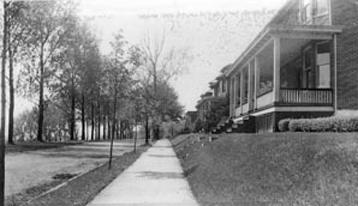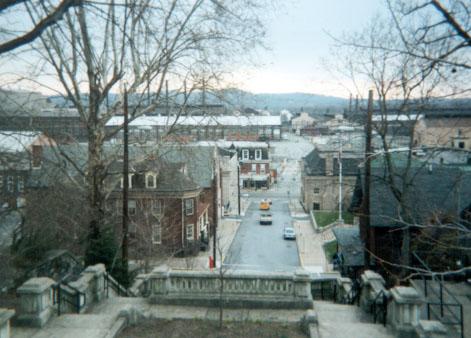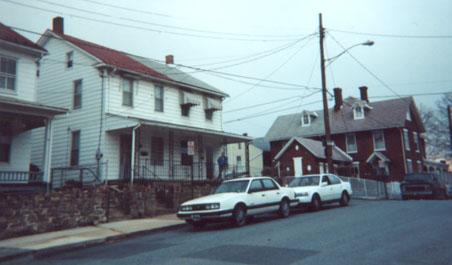
Courtesy of the John Yetter Collection
“Steelton is a little town with a big heart”
– William Pettigrew
Steelton
After the Civil War (1861-1865), many African Americans sought refuge from discrimination in Southern states by moving North. The first wave of this Great Migration traveled to the northern urban areas between 1900 and 1920. Many were pulled North by opportunities in industrial work during World War I (1914-1919). African Americans also found work in the steel mill, meat packing industries, and on the railroads. Steelton is a steel town on the southside of Harrisburg, Pennsylvania where many African American migrants chose to live. Today thirty-three ethnic groups reside in this small steel mill town of 6,000 inhabitants.
Most African Americans settled on the West Side of Steelton, near the train tracks and the steel mill along the Susquehanna River. Although there were many schools for children to attend in Steelton, all black children attended the Hygienic school on the East Side, even if they lived on the West Side. Although Steelton is a very diverse town and many narrators said that it’s neighborhoods welcomed all people, segregation still existed and African Americans had to deal with discrimination and racism in education and in employment opportunities.
Steelton has a reputation for being a sports town. In the past century, Steelton High School has won over 70% of their high school football games. In Football, Steelton, and the American Way, it notes: “You know, we’re all a little yo-yo here about football…They used to have cops on the field to control the crowds for practices…Football is the rallying point of the town…They’re losing jobs at the mill, and the football team is one thing they still feel good about.”
To this day, Steelton is still primarily a working-class community, with a large percentage of their residents going into the workforce after high school. According to the 1993 Dauphin County Data Book, 10% of Steelton residents hold a college degree. As of 1989, the median income for a household was $28,181.
Impressions of Steelton
Having grown up in a large town outside of Washington D.C., I found Steelton to be a very different community. One main street hosts a variety of businesses, including several old restaurants, a Boys’ and Girls’ Club, a Drug Store, the Steelton Borough Hall, and a fire station. Across the street from these businesses lies the deserted steel mill. In the year 2001, many of the large red mill buildings have broken windows. Every time I drove to Steelton it was raining, and the atmosphere seemed very cold. Once I met people, however, I realized that the town was not as cold as it looked. As I walked down the street, strangers smile and said “hello” to us. Due to its small size and population of fewer than 6,000, Steelton appeared to be a ghost town to me, although other students in the American Mosaic said they felt that they were coming home.
- View of Steelton from the top of the stairs
- A typical street in Steelton

